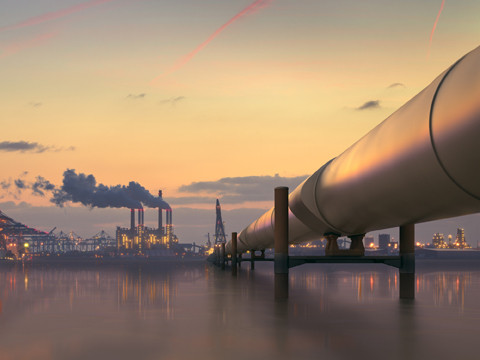The broadest definition of a commodity would see it classed as a good which is supplied without qualitative differentiation across a market.
What does this mean in real terms? Well, copper has a universal price which fluctuates on a daily basis in reaction to supply and demand.
In contrast a produced good such as a smartphone is priced according to a number of different variables including: the strength of the brand; the specifications of the product and the market in which it is being sold.
'Soft' commodities are ones which can be grown while 'hard' commodities are ones which can be extracted by mining or drilling.
Commodities markets are worth keeping tabs on as they impact the bottom line of nearly all companies in the form of raw material and energy costs. And an increasing number of investors will have some commodities exposure in their portfolio for diversification.
DIFFERENT TYPES OF COMMODITY
Drilling down further we can separate commodities into four key classes: energy, represented by oil, gas and coal; agricultural products such as corn, coffee and sugar; industrial metals like copper and iron ore and precious metals - the most actively traded of which is gold.
All of these classes are driven to a lesser or greater degree by the macro economy but there are important distinctions to be drawn both between these groups and within them.
Like the majority of commodities, oil is traded in futures contracts - with the purchase or sale of a barrel of oil agreed at a fixed price for delivery on a specified date - typically either one month, three months or six months out.
This facilitates the buying and selling of a commodity without anyone having to take physical delivery - in fact only a tiny fraction of these contracts are settled through deliveries. As well as the price of the futures contract you may see reference to the 'spot' price of a commodity and this is the price quoted for immediate delivery.
The two main benchmarks in the crude oil market are West Texas Intermediate (WTI) and Brent. US oil is priced off WTI while the latter is the more global yardstick.
Oil is one of the key engines of economic growth and prices are closely linked to the fortunes of the global economy, as a result it is particularly prone to volatility.
The increased exploitation of unconventional sources of oil and natural gas in the US has also opened up a new source of supply and helped constrain prices for both commodities in recent years.
GEO-POLITICAL DRIVERS
Geo-political issues can have a significant influence on the oil price. The Organisation of the Petroleum Exporting Countries (OPEC) controls a significant proportion of the world's oil reserves and this gives the cartel at least a degree of control over the future direction prices.
Coal, the fossil fuel which facilitated the industrial revolution, remains an important contributor to the global energy mix.
The industrial metals complex is made up of aluminium, copper, lead, nickel, tin and zinc. These six metals are traded on several exchanges around the world but the benchmark contracts are listed on the London Metal Exchange (LME).
Volume on the LME is dominated by the aluminium, copper and zinc contracts, which combined represent around 85% of total turnover.
Copper is often seen as a good barometer of the health of the global economy, earning it the sobriquet 'Dr Copper'. This is largely due to its ubiquity. The metal is a critical component in the manufacturing of electronics, homes and infrastructure.
ALL THAT GLITTERS
By definition precious metals are rare and have high economic value. The platinum group metals (PGM), which includes platinum as well as palladium, iridium and rhodium, do have industrial uses - principally in the construction of emissions limiting technology in cars.
Silver is widely used by the electronics industry but like gold, which has limited industrial applications, a significant proportion of global output is used in the manufacture of jewellery.
The value of gold tends to go up when there is economic or geo-political strife, when inflation threatens the value of paper currencies or when there are significant falls in equity or bond markets.
Its status as a 'safe haven' asset relies on its historic role as a store of value and also on the fact that, unlike currencies, its value cannot be manipulated through changes in interest rates.
An investor looking for exposure to to the commodities market could look to a commodities fund, exchange-traded fund (ETF), exchange-traded commodity (ETC) or a listed company with exposure to commodities - like a miner or oil and gas producer.
While there are long-term drivers for commodities demand, it is important to remember that in the short-term these markets can be volatile.
This is the latest in a series of guides on the basics of the financial markets to appear on our website in the coming weeks.




